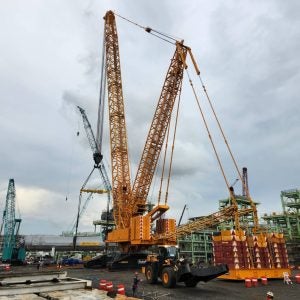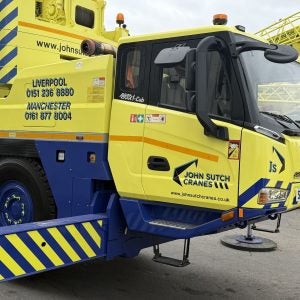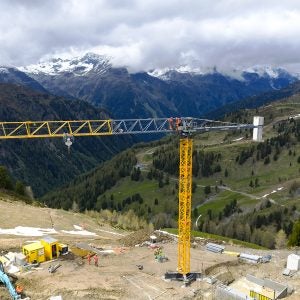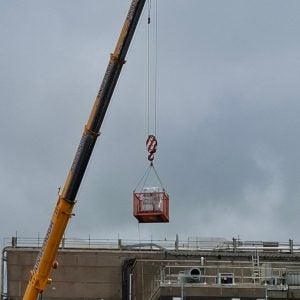Guided by an American manager, Russia’s largest mobile crane maker is taking its first steps into external markets – both to the west and to the east.
Avtokran, located in the Central Russian city of Ivanovo, is poised to flood Europe with cheap slewing rings and win over Asian buyers with an affordable 100t all terrain crane.
Directing this debut is Yul Armani, president of US-based International Business Associates, Inc. (IBA). IBA is a major shareholder in Avtokran and a partner of the Independent Association of Machine-Builders (Russian acronym, NAMS), which controls both Avtokran and its subsidiary, the Bryansk wheel tractor plant (BKZT). The latter factory, which once supplied chassis for Soviet missile carriers, was the first to launch production of special chassis for mobile cranes in Russia.
‘Today it’s the right time, and I’m in the right place,’ Armani said in a recent interview. ‘We are doing the same quality job [as Western companies] and at the same time we give a better price.’
Avtokran’s westward expansion started last year when its managers forged business ties with Terex and signed protocols of intent, which have since developed into contracts, for the supply of slew rings for two Terex subsidiaries in Germany, Atlas and Schaeff. Armani sees these relatively small contracts as a litmus tests for further mass exports to Western manufacturers. Two other major equipment manufacturers, Terex Demag and Kubota, are already testing Avtokran’s slew rings.
Seeking opportunities to export slew rings was quite natural for Avtokran’s managers. In the Soviet era Avtokran served as a slew ring supplier for all other Russian crane plants. After the collapse of the Soviet Union demand for cranes shrank considerably. In addition, some crane plants launched their own productions of major parts, including slew rings.
The 100t-capacity KS-8973 (KS stands for ‘mobile crane’ in Russian) was designed in Germany and is the biggest capacity crane to be produced in Russia. It has a 41m telescopic boom and a 10x8x8 chassis with independent hydropneumatic suspension. The chassis was also designed in Germany and built by BKZT. Avtokran plans to assemble the first unit by September and produce up to 10 by the end of this year. All the main components are supplied by the well known Western firms, including Kessler and Rexroth. The booms are made by Vlassenroot of Belgium (as featured on the cover of Cranes Today, March 2003).
Armani predicted that the KS-8973 model would be successful because it is expected to be much cheaper than Western counterparts. The crane’s capacity sets a new record for the Russian crane industry. Targeted external markets for the all-terrain are India, China, Mongolia and Afghanistan. All these countries are hungry for inexpensive but reliable cranes and unlike the West are not suspicious of Russia-made machinery, since they relied on Soviet-made equipment for much of the 20th century.
Led by Armani, IBA became Avtokran‚s partner in 2000, just after the plant was saved from bankruptcy by the new owner, NAMS. After production was stabilised and new models were put on the conveyor, the next task for the plant’s managers was to look for new markets. To gain importers’ confidence Armani began by toughening quality control at Avtokran. Now he is confident enough in Avtokran’s slewing rings to offer potential buyers a 2-year replacement warranty. Armani has even agreed to use German-made steel for Avtokran’s slew rings upon customers’ request. Last November, Avtokran received an ISO 9001 quality certificate from the German TUV Cert company, which facilitated negotiations with German partners.






